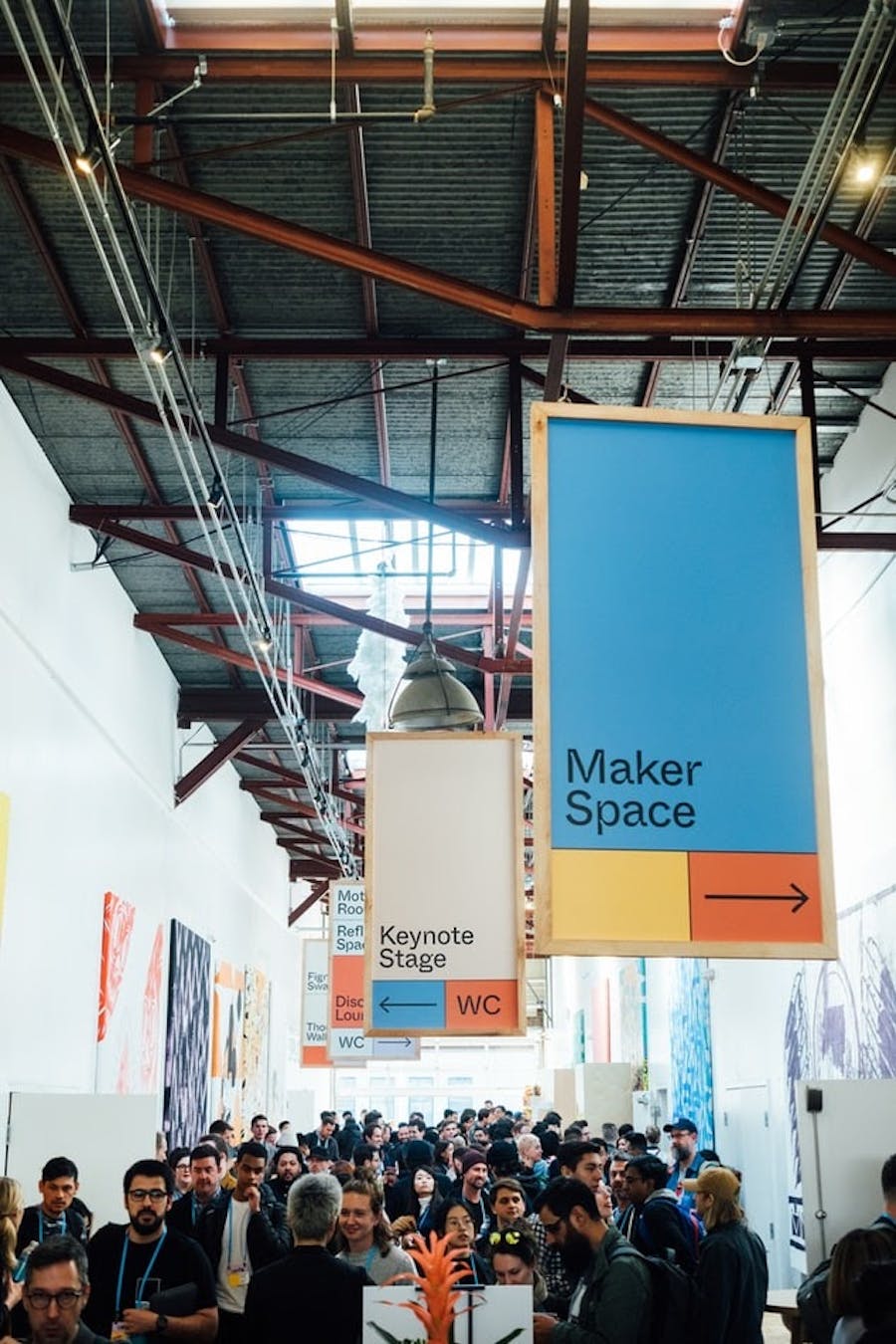The purpose of internal events cannot be reduced to simply acquiring customers or gaining notoriety. Internal events are about transmitting information and strengthening the link between employees.
Qualitative aspects are therefore particularly relevant in assessing the success of such events.
Another characteristic of these events is that their formats can be very different.
They can be recurrent (onboarding of recruits) or occasional (company anniversary) and can include every department of a company. There is a lot to dive into!
Two main categories can be outlined:
- Corporate celebrations, whether recurring or one-off. They are essential to "mark the occasion" and establish landmarks in the collective history of a company. They will often become memories shared by all employees and thus contribute to the company's culture.
- Events related to the business or activity: the aim is to share/transfer information, values, and know-how (top managers' meetings, training, seminars, strategic direction, etc.). They are essential for passing on information (between decision-makers, managers, operational teams, etc.)
To measure the performance of internal events, a survey (qualitative or quantitative) is often used after the event.
Do you know this mnemonic to qualify your objectives? SMART:
Specific: it should be as targeted as possible.
Measurable: wanting high employee satisfaction is good, wanting 90% employee satisfaction is better.
Achievable: do not set objectives that are out of reach. Break the objective down into several sub-steps to ensure a coherent roadmap.
Relevant: make sure you can learn from the event and can easily reorganize it to improve. Create an objective that aligns with your long-term goals.
Timely: a topic is only interesting for a certain period of time. Make sure you make the most of it and control the timing of your event. (As a reminder, a webinar rarely lasts more than 45 minutes).
Here are some examples of KPIs you can learn from.
💪 Measuring cohesion building
Why: Whether it's through team building, a fun moment, or an unforgettable experience, cohesion is essential to building a company that works well over time.
How: Good news, you have at least three (complementary) ways to measure team cohesion!
First, we recommend that you listen to the participants and the various stakeholders during the event in order to get a general feeling about your event, and be attentive to weak signals! This on-the-spot feedback is an excellent indicator that should not be neglected and should be formalized by email at the end of the event: take notes!
To further structure the information gathering, you can create a post-event satisfaction form (with real-time statistics), made up of qualitative questions with free answers - which you can send via Digitevent - such as:
- Did you feel closer to your colleagues at the end of the event?
- Did you see your colleagues in a new light thanks to the event?
Other methods consist of the hosts offering a quiz on a tablet directly after the event.
Consider using Likert scales to get a more clear-cut and mathematically accurate answer.
Note that the wording of your questions has a strong impact on the answers submitted. Depending on your purpose, you may need to word your questions differently 🤫...
For example, you will not ask the same question if you want to know the reasons for turnover in your company (and therefore get real answers about what is wrong...) or if you want to get flattering statistics on employee satisfaction.
- The more vague a question is "Did this event bring you closer to your colleagues?" the more it will be left to the participant to interpret, and generally speaking, you will get more positive results, but often less easily exploitable.
- The more specific a question is "Did you feel you got to know your colleagues better, in a more personal and profound way?", the more you will get contrasting answers, with fewer positive (but more honest) answers.
Consider letting participants respond anonymously, which can free up the floor in a corporate context where clear-cut answers are sometimes risky.
To check the effectiveness of your events, you can also do "AB testing". For example, do a survey before your event, then the same survey later: did you improve your score? You do not need to question the same audience to obtain usable results if you have a sufficiently large base of respondents and you keep the same operating mode (response time, type of audience, wording, etc.).
💞 Measuring the transmission of corporate values and brand attachment
Why: Brand attachment is the emotional component that binds your company to employees. It can be created through its values, its day-to-day actions (e.g. through Corporate Social Responsibility - CSR), or its benefits (gift cards, winter sports weekends, travel, incentives...).
It can be useful to write a document with your deepest corporate convictions, as well as the values you advocate for and how you apply them on a daily basis... There is nothing better for boosting employee morale than to work together on a project that has meaning and a vision.
To create brand attachment, explain the societal role of the organization, what you contribute, who you help, how you do it, and above all, express your thanks - be grateful.
How: Internal corporate events help to create brand loyalty, and you can measure this in the post-event questionnaire with questions such as:
- "Do you feel more in sync with the company's values after this event?"
- "Has your opinion of the company (favorable or unfavorable) been reinforced by this event?"
Don't forget to keep your survey anonymous, in order to get the most honest and objective answers possible - and make sure that respondents are aware of the anonymity of the answers!
🎓 Measuring information formation and transmission
Why: To measure the efficiency of the information transmission, a questionnaire with the main themes discussed during the event is necessary.
This type of online questionnaire can be created automatically and sent to a specific category of participants with Digitevent.
Training, whether virtual or physical, often takes the form of workshops or conferences during which participants receive a lot of information in a short time.
Though a good way to keep your employees up to date, training courses still require some follow-up to make sure that the knowledge was correctly transmitted, that the subject was interesting, or that the speakers were dynamic.
How: Send a quiz to the participants and measure the impact of the training via a simple formula:
- (Respondent with more than half the points / Total respondents) x 100
If you see that a large majority of respondents have good scores, you've done a good job of getting the information across; your training was effective.
☑️ Measuring the logistical efficiency of the event
Why: Whether it concerns your speakers, your caterer, the accommodation of your guests, or even the hostess agency, all the key success factors that revolve around your event can be evaluated (including your event agency, the event program itself, or the speed of printing badges!)
For example, if your event is being broadcast, take care to select speakers who will be comfortable with the camera, and who will be eloquent.
How: List the key success factors and ask your attendees to provide a score on each (one question per criterion - ideally with a Likert scale score of 1-7, to avoid neutral opinions as much as possible), and make status points with those who score fair or poor. This is also an opportunity to ensure the continuous improvement of these providers, which is important during your events.
🧠 Synthesize and bring new ideas from brainstorms and collective intelligence
Why: Collective intelligence is often a vector of innovation in companies. Regardless of the frequency of brainstorming, the pooling of ideas in order to solve a common problem often leads to a collective and unexpected solution.
How: During your internal events, to bring out good ideas and stimulate your employees' creativity, you can use tools like Mural to set up interactive brainstorming workshops.
Then ask the managers: what would they have changed in this session afterward to generate more ideas? Are they satisfied with the new ideas they collected? Do they plan to do these sessions? If so, more or less, and how often? With what sample of employees?
🍃 Measuring acceptance to change
Why: Similarly, willingness to accept change is instrumental in the internal strategy of the company. It's very difficult to get people to step outside of their comfortable routines (it's even more difficult in large companies) and to get them to accept new tools.
How: To make sure that the directions given will be implemented, you need to check that your message is correctly understood.
Again, you can use a questionnaire tool built into your event management solution to verify that the information is coming down correctly and that the assignments have been understood, for example:
- "Following this event, what actions will you take to implement the new strategies?"
- "Do you agree with the new group policy?"
- "Do you agree with these changes?"
💰 Measuring cost per participant
Why: To go a step further, you can measure the cost of the session and relate it to the cost estimated by the managers: were the ideas brought during this session worth X euros/dollars? (corresponding to the direct and indirect costs of brainstorming).
How: For a correct calculation, take into account the hourly wage rates of the people involved, the venue, the catering, but also the opportunity costs and the indirect costs. Then relate this sum to the approximate (and very subjective) value of the ideas and other KPIs brought by the session.
🌱 Measuring societal and environmental impact
Why: More and more, the event industry has to evolve and propose more environmentally friendly ways of operating, with a real societal approach behind each step of the process.
How: You have several ways to calculate your societal contribution: By measuring the proportion of your service providers who have a CSR approach, by measuring your own carbon footprint during the event, by asking participants their opinion on this aspect...
To go further, you can even decide to call upon a certification firm and pass the ISO20121 standard, guaranteeing you an image (and an investment) as an actor invested in environmental improvement issues in events.
Don't hesitate to visit our article dedicated to environmental issues in the organization of an event!
Conclusion :
Internal events often require the measurement of more qualitative KPIs.
We are looking to understand the feeling of the participants, more than to statistically measure certain data.
In addition, Digitevent's real-time dashboard can give you relevant information on attendance rates, response rates, among other objective elements.
However, it will take a lot of human interpretation and experienced managers to be able to accurately analyze the various responses to your questionnaires. Ask your managers about the obstacles and successes of these internal events, what they would change, what they appreciated, and whether they plan to do it again this year.
Also, take the time to debrief after the results are in. Data and the understanding of performance are fundamental, but they must remain at the service of decision-making in order to improve over time.
And above all, don't forget to have fun in your internal events, they will be all the more memorable for your teams :)




